$300k Reality Check: Grand Tourer Fantasy Meets McLaren's 720S
Cars are nothing without context. Though many do a little bit of everything, most are built with a primary focus in mind. Performance cars take to the track, where they plane seconds off lap times like so much wood shaving. SUVs are the rugged overlanders that are handy when the road ends, yet traversal continues.
The GT – or Grand Tourer – on the other hand, seems to be more of an honorary title than an official designation. These are cars that mix performance and luxury, intended for road trips but favor the sport experience over capacity. As such, they're rarely used for this purpose, with drivers content with the fantasy that their sporty GT has the capability to take a cross-continental journey just for the fun of it.
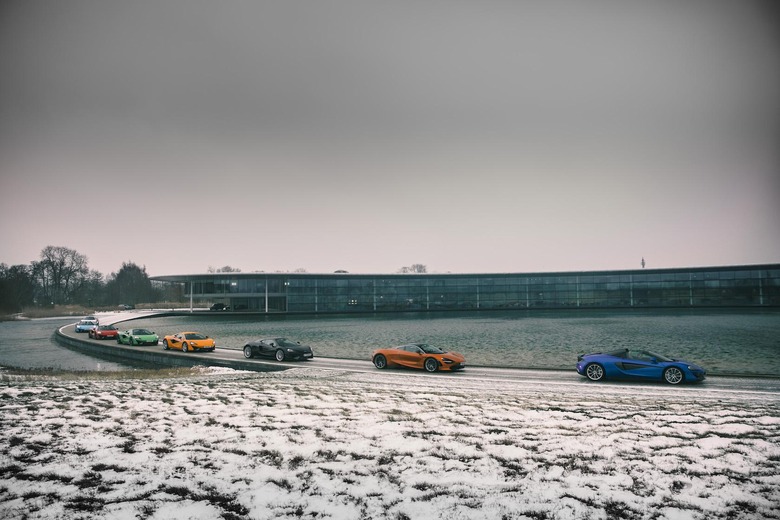
Not content with just dreaming, we took a few of McLaren's finest across Europe to do exactly that.
The starting line: Woking, UK
McLaren Automotive may be a young automaker, but it's part of a company that's carved several notches along motorsport's vast timeline. With a number of one-offs under its belt, only very recently has the Woking based brand begun translating its race-bred technology to road cars in earnest. It currently operates on a three tier product lineup made up of the Sport Series, the Super Series, and the Ultimate Series.
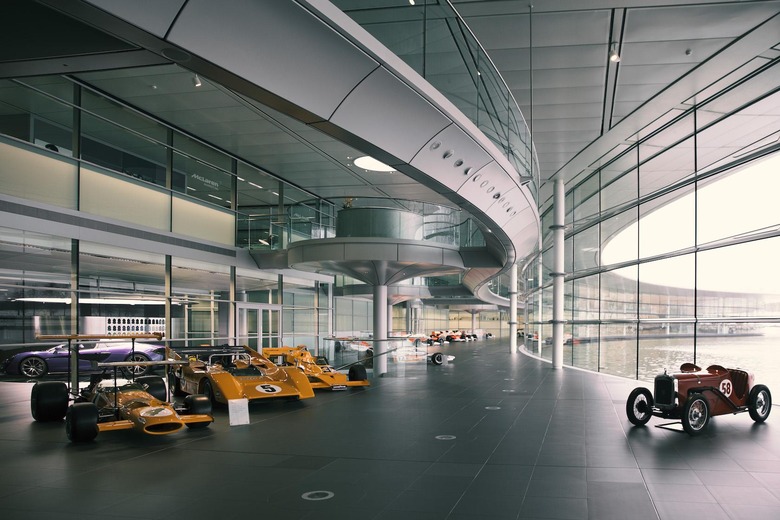
Our car of choice was the 720S, McLaren's latest offering and current Super Series representative. A bevy of 570's piloted by other journalists would also join us – 570S, GT, and Spyder – both for the sake of comparison as well as giving us something stunning to look at. Our trip would start at the McLaren Technology Center in Woking, England and on to Geneva via the scenic route, where the McLaren Senna, the latest Ultimate Series model, would be revealed to us.
As it happens, our mission to imbue the grand tourer fantasy with the realities of such an undertaking was off to a stellar start. We set off on our journey from Woking at the top of March, when England was battered in the heaviest snow it's seen in decades. A convoy of colorful supercars marching down the motorway while "the beast from the East" took out daily commuters left and right certainly earned us a few double-takes.
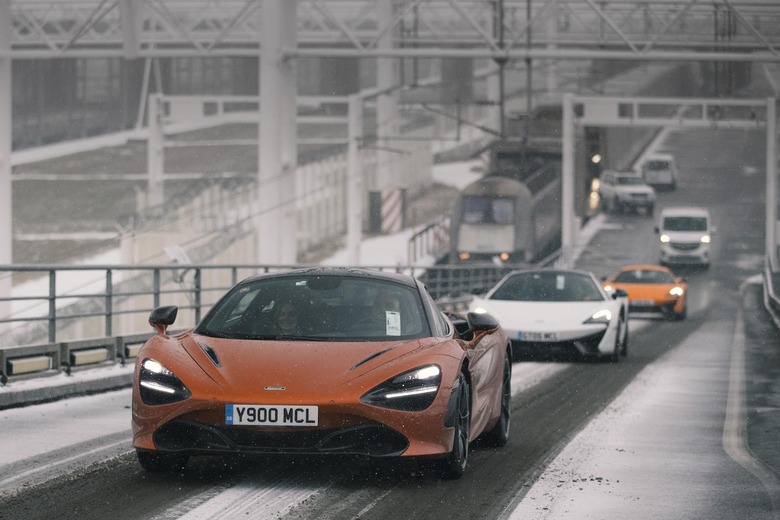
The experience was just as bizarre from the inside as well. Though shod in winter tires, our hike to the Eurotunnel was a white-knuckle affair. Indeed, as we set out from Woking, McLaren engineers were keen to emphasize how different the "720" part of the car's name, which is the car's output measured in PS (Pferdestärke, German for "horse strength" and slightly different from horsepower). This means that there's 710 hp on tap that can certainly make things go sour in the wrong conditions, and we were certainly in them.
Eurotunnel - Calais, France
Taking the Eurotunnel from Dover to Calais is a pretty casual affair: you get your ticket, you grab a snack, and you load your car into one of the carriages. The same went for us, apart from the fact that we're in a $300,000 supercar that leaves us little margin for error when it comes to ground clearance, reach from the driver's seat, or even sandwich storage. Nothing pulls you out of the GT fantasy like swinging open a dihedral door and trying to reach a ticket booth, hanging out of a supercar like a helicopter machine gunner while clenching a bag of chips in your teeth.
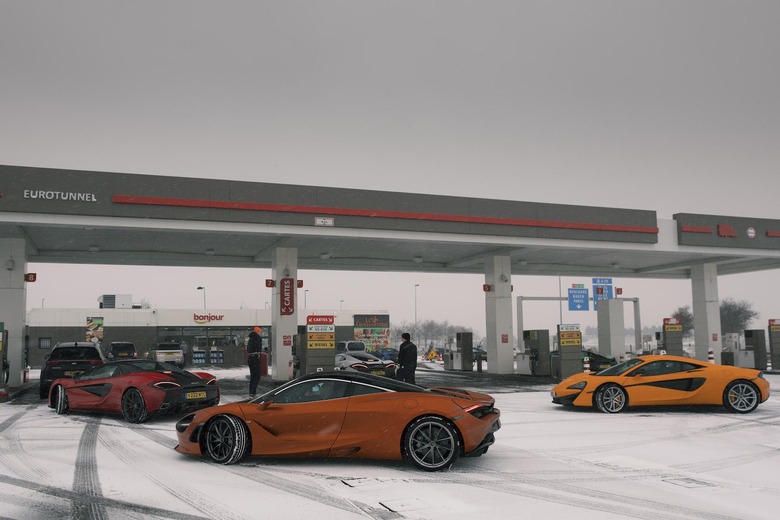
With our convoy loaded up like the most expensive packet of Skittles ever, we were able to take a moment to appreciate how far the McLaren design language has come in such a short time. Being of a different series, the 570S isn't a direct predecessor to the 720 – that honor goes to the 650S – but is a proper representation of the look that's become distinctive to McLaren. You can see elements have form indicative of the "swoosh" in McLaren's logo; the headlights, for example. From there, the 570S has an aggressive wedge shape that starts with a wide grin, a bubble-like cockpit in the middle, and ends with an in-your-face rear replete with flying buttresses and almond-shaped LED tail lamp/air vent combo.
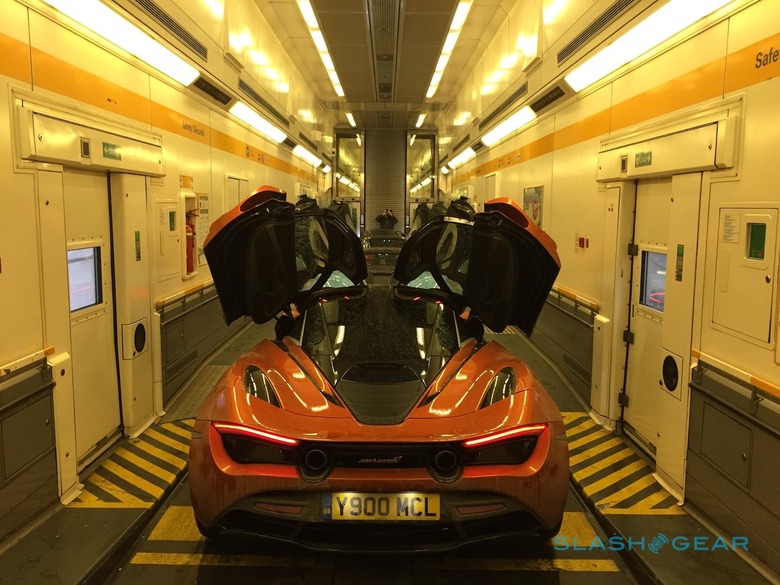
Compare this to the 720S and you can see an evolution so dramatic, you'd be forgiven if you thought it skipped a few generations. Like the jump from the original Star Trek Enterprise to the one in The Next Generation, the 720S retains the recognizable elements of its forbearers, but they've been so further refined, the contrast is startling. The front seems narrower, with facia apertures being less visually dominating. Attention immediately goes to the headlamps that now look more like a full, rounded triangle rather than a half wedge. They're bisected by LED light strips that align with the point of the 720's nose.
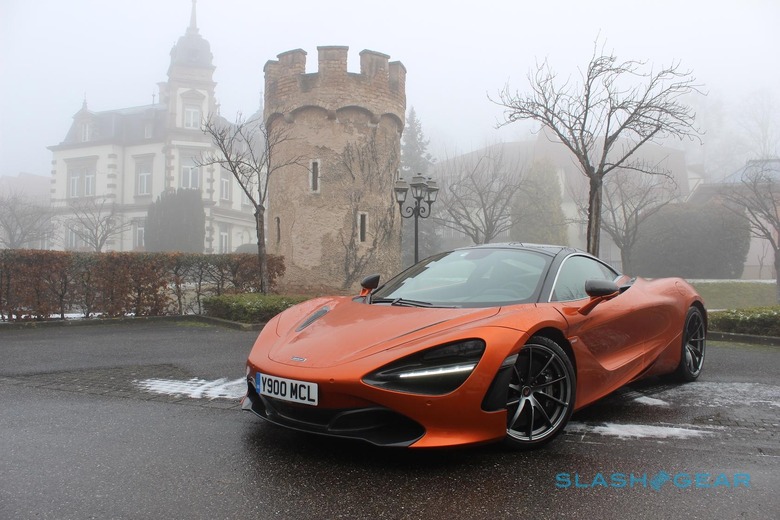
The hood creases gain a few vents while the bubbled cockpit becomes a bit more pronounced. Where the 650 and 570 have side vents on their rear flanks, the 720S flips the look, with buttresses behind the front wheels that send air around a smooth rear haunch. It's in the back that the 720S has the most going on, replete with channels to direct airflow down to a tucked-away speed activated rear wing. The rear tail lamps are packaged in a very low profile to give way to the vents, which now share space with the dual exhaust, raised up from the diffuser and placed high along the rear bumper.
It's certainly the crown jewel of our convoy, as we disembark in snowy Calais, and makes the 570 look almost dated, not at all like a car that started production barely three years ago. This is a byproduct of the automaker being comparatively younger than its competitors. Most other sports car brands have had a few decades to establish familiar traits, and watching McLaren's rapid progression is like watching a time-lapse of evolution. With this in mind, the 720S's look is so fresh it's almost alien since no one has ever seen anything like it. Anyone who sees it might not immediately recognize it for a McLaren, but they certainly can't mistake it for anything else on the road.
Calais, France - Namur, Belgium
The remainder of the day was a straight shot across sloshy highway roads to our first stopover in Belgium, and it allowed us to focus on the 720S's interior. Again, it's an incredible advancement in comparison to its predecessor as well as the 570's cabin. Though streamlined, the layout of these two cars are not without issue, and McLaren has made good use of the feedback its received, making things like the seat adjustment buttons slightly easier to manipulate and updating its infotainment system.
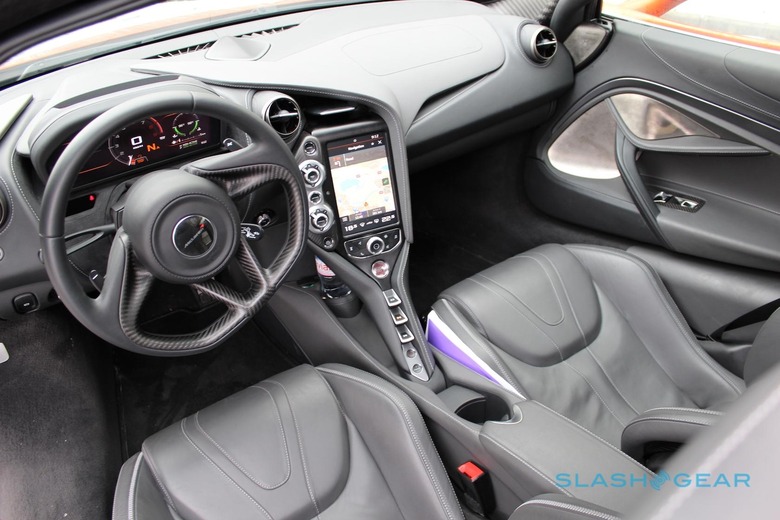
The bubble-like windshield emulates a fighter jet's canopy, making forward visibility exemplary. Individual fixed sunroofs on each dihedral door compliment that, helping with making the occupants feel connected with the outside and not sealed in. Making that portion of the door also a portion of the roof helps mitigate the awkward ingress/egress that supercars tend to offer.
McLaren builds the 720S around a carbon fiber chassis that allows for all the elbow room we have, without compromising on strength or lightness. We occupants never overlapped, neither impeding the driver or disturbing the passenger. As far as layout, McLaren has situated the drive select knobs to a more asymmetrical location closer to the driver. It sits next to the mercifully updated eight-inch infotainment display. On cars like the 720S, the custom interface has proven to be less than intuitive and comparatively slow to its counterparts on other cars, be them super or otherwise.
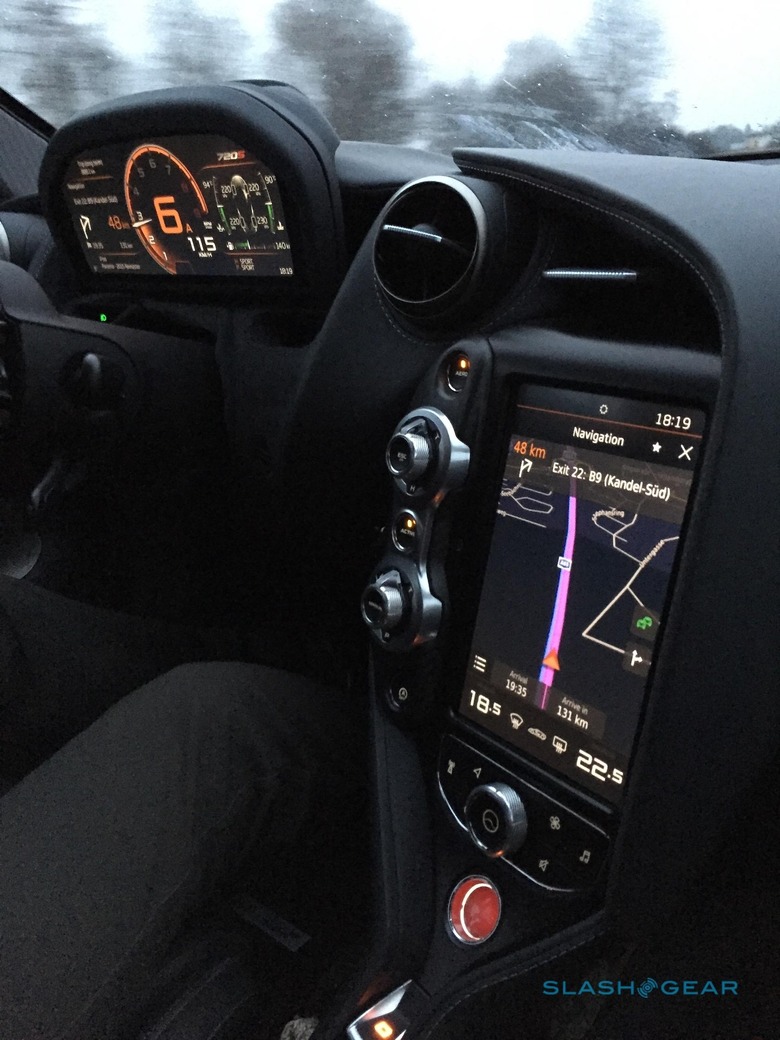
It's been improved slightly on the 720S so it processes things and displays them without the same lag as the previous version, but it's still easily the weakest part of the car. Indeed, this new version even calculates routes differently than the 570s in our party, which led to some unexpected alone time when their nav said to go one way, and ours said another.
With that said, the 720S is far from being tech-free, with some of the most useful being an assortment of parking sensors as well as cameras that can provide a simulated birds-eye view of the car to necessitate the very careful parking a $300,000 vehicle requires.
Namur, Belgium - Strasbourg, France
On day two, we began feeling quite familiar with our 720S, half forgetting that we were in a burnt orange spectacle that isn't necessarily a common sight in the towns that we passed through. The occasional double-takes and videos being shot from cars keeping pace alongside us were the most common reminders. The Grand Tourer was playing its part beautifully so far, appeasing whomever was at the wheel at the time with a smooth ride and bursts of excitement on unrestricted portions of the motorway. Meanwhile, those sitting shotgun had enough support and recline to allow the 4.0-liter twin turbo V8 behind our heads to sing them to sleep until it was their turn at the wheel.
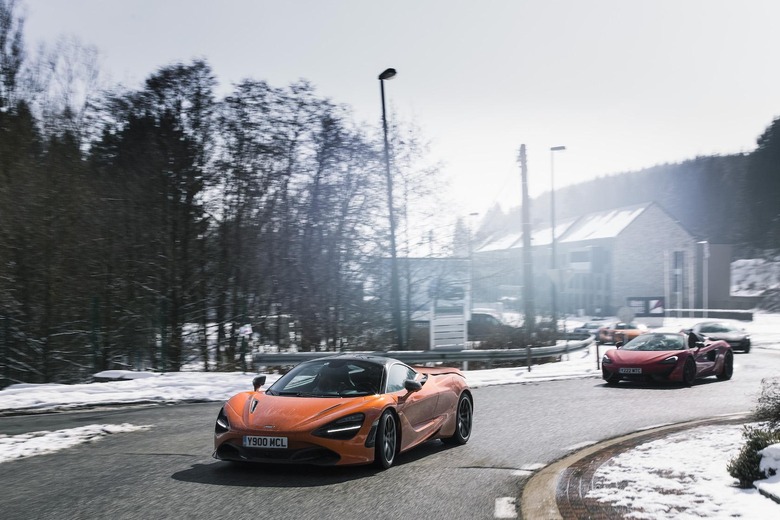
We were even doing okay on fuel for most of the time, though the leadfoot portions of the journey did catch up to us on a couple occasions. In all, the 720S was living up to its GT charge, though it probably wasn't designed to go through as much wiper fluid as we did during our 850-mile trip. The combination of unusually poor weather and distance traveled meant our dutiful "macca" was caked in more road schmutz than the typical supercar owner would dare allow.
Our first stopover was at historic Spa-Francorchamps, a track that's legendary for its high speed and elevation changes, and home to Formula 1's Belgian Gran Prix. McLaren has some history here, too, notably sealing its Constructor's championship 30 years ago when Ayrton Senna and Alain Prost achieved a 1-2 finish in 1988. From here, we decided to do the next leg in the 570GT, the trim of the Sport Series coupe spec'd specifically for an undertaking such as ours. It doesn't depart radically from the 570S as there is still a 3.8-liter twin turbo V8 at its heart, delivering all 562 of its horsepower and 443 pound-feet of torque. The main differences lie in its slightly softer suspension, panoramic roof, and a modicum of extra storage space behind the driver's head.
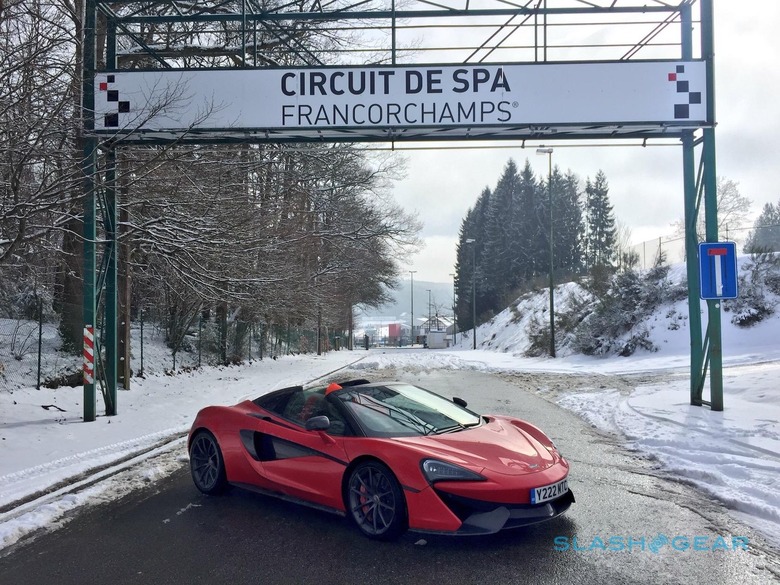
Even with the added refinements of the GT trim, the advances in refinement from this car to the 720 is significant. The 570 is great, that's no question, but it always feels like a road car built by a race team. It's loud, it's a little rough around the edges in terms of its feedback, and the raw nature of it comes through in the thin layer of civility McLaren has bestowed on it. Consequently, it drives amazingly, it sounds like a Formula 1 car when engine response is cranked up to full response, and it doesn't feel like it's going to save you if you drive outside the limit.
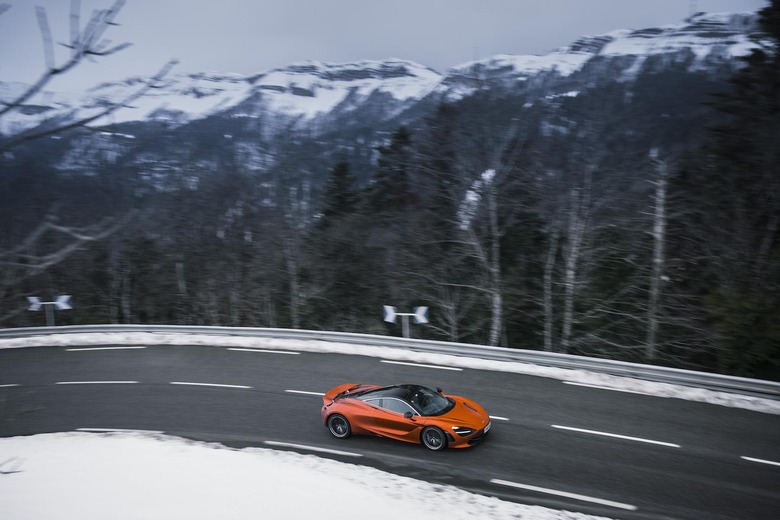
Sports car makers can laud how close their road cars are to their track-attacking iterations, but the 570 feels like a race car, warts and all. In contrast, the 720S smooths out some of the rough edges that the 570 exhibits. Some might lament that, thinking the 720S is softer, but what it does in actuality is refine the experience by making several quality of life improvements. You still have the race car underneath, but it's now a little easier to live with.
Strasbourg, France - Geneva, Switzerland
Nearing the end of our journey, we reflected on the realities of the grand European tour we set out on. Were there the usual boring bits every road trip has? Of course there were. Did having a supercar on hand at least mitigate the mundanity? Certainly, but did we capture those moments that enthusiasts imagine when staring off in the distance and transporting themselves on a GT fantasy? We weren't too sure.
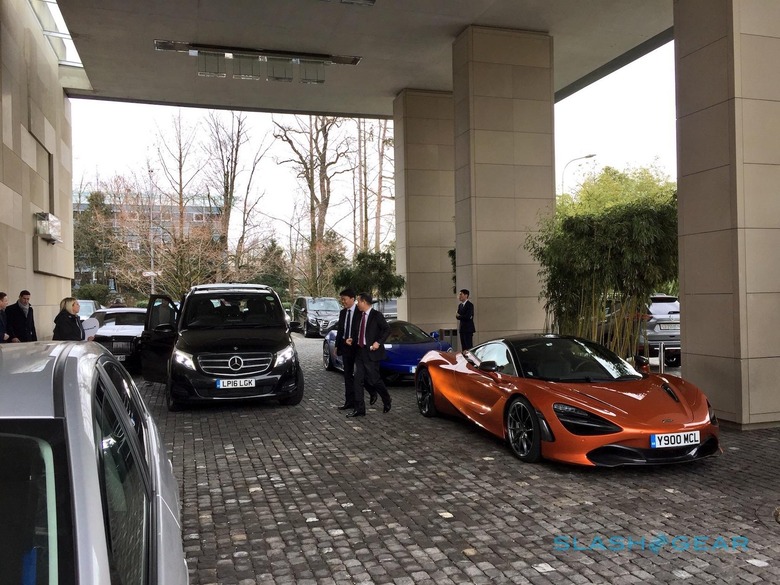
We had unrestricted autobahn stretches which allowed us to plant the 720S's pedal to the floor, finally unleashing all the potential of the 4.0-liter twin turbo V8 that's been teasing us the whole time. With each opening, we tried to climb as near as we could to the 212 mph top speed of the McLaren, but traffic and bends in the highway curtailed our victory, though we certainly enjoyed the attempts. We had some back road exploration, where the 720S and the 570S had some back-and-forth horseplay, which broke up the hours of highway cruising but, as pleasing as it was, it felt like something was missing.
Nearing the Swiss border, we detoured though Gex on an excuse to delay our arrival to Geneva for a short while before the sunset. As we wandered up mountain paths, we found a lookout that felt like an appropriate spot to declare the fun part of our McLaren journey over. From here, it was just a ten-mile run to the hotel where we'd hand over the keys of our exceptional companion for good. As it turns out, this placed us smack in the middle of what we were looking for. It was towards the end of the day and locals were filing down the mountain, heading home. A quick Google showed us that this mountain path lead up to the peak and the back down the current mountain we occupied. It was time for one last run.
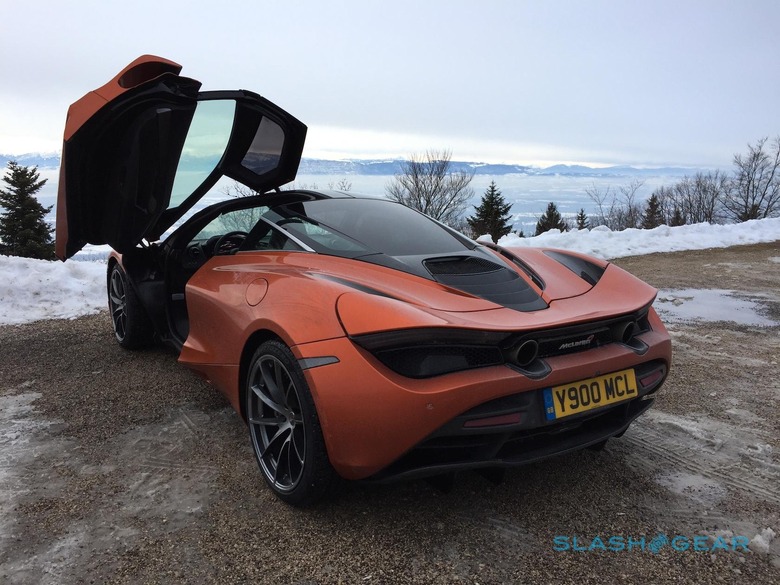
Two knobs in the 720S determine its driving mode – comfort, sport, or track. One corresponds to engine response and exhaust noise while the other stiffens the dampers for more direct handling. Even with the light snow dusting the mountainside, we couldn't resist unleashing the 720S to its fullest degree. Switching out of comfort, the digital gauge screen before us slowly flipped down, displaying on its edge another thin strip of display that delivered only the most minimal graphics: speed, and a light bar displaying the revs and shift points.
The McLaren threw any of its decorum out of the window, loudly blaring while we dove towards the mountain's winding corners. We could feel the car's displeasure at the road's slickness, but never did we feel like we couldn't rein the 720S back into control. Most corners were deftly rounded thanks in part to its brake steer ability, a torque-vectoring system that sends it to the wheels that need it most, smoothing out your exit. When it didn't, the amount of oversteer was within our ability to manage it due to the variable drift control. This system allows drivers to customize just how much of a drift angle they want the car to allow, before traction control steps in to save the day.
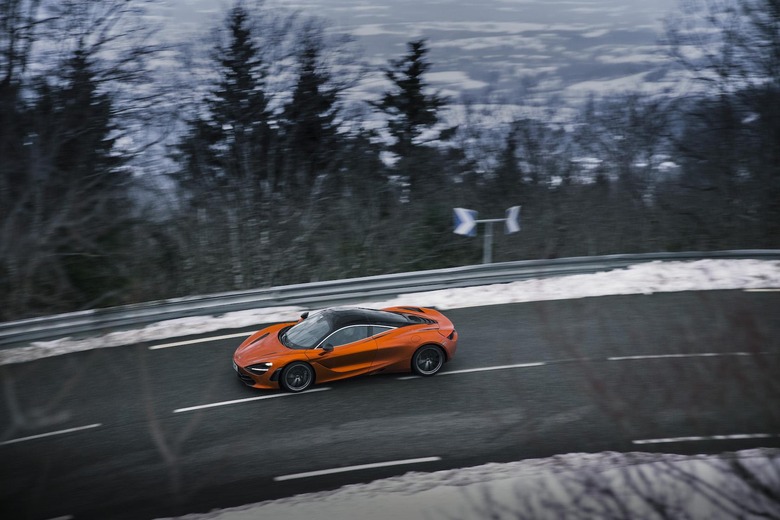
This is what we were looking for, this was that fantasy GT moment: Blasting the McLaren 720S at full tilt through the Rhône-Alpes without another car in sight.
With the crown jewel of our journey affixed to the end of our drive, we were satisfied, rolling into Geneva to the bevy of camera flashes we were used to, but knowing to quickly get out of the shot so the real star could be seen. The McLaren 720S is throughly impressive, and is a true threat to the old guard of supercars, just as the automaker's cars have been in motorsport. Is it a true Grand Tourer, if such a thing exists? We've got 850 miles cataloged that definitely check out.
